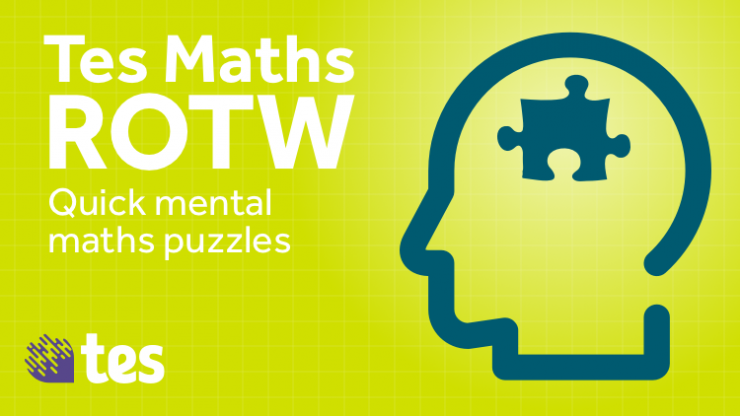To see all of the work I do for TES Maths, including Resource of the Week, Inspect the Spec, Pedagogy Place, Maths Newsletters and Topic Collections, please visit the TES Maths Blog here
What is it?
Time to go a bit controversial for this week’s TES Maths Resource of the Week. Not everybody thinks that it is important that students can do mental maths quickly, and especially not under time pressure. Indeed, done the wrong way, such pressure may induce the kind of maths anxiety that can be so debilitating for students of all ages and ability levels. However, I am firmly of the belief that if students can carry out as many mental maths calculations without imposing significant strain on their working memories – with as many of these calculations automated as possible – then it frees up capacity to think about other things, such as how to solve more complex problems that involve these calculations. Whatever your viewpoint, hopefully you will find this wonderful resource of use. It consists of 46 maths puzzles, each of which require several mathematical operations to be carried out from the starting number to reach the final destination. Timers of 30, 45 and 60 seconds are provided on each slide, but these do not need to be used if you choose so.
How can it be used?
The obvious way to use this resource is as a starter activity. Lots of different mathematical operations are covered in each puzzle, including the basics of addition, subtraction, multiplication and division, but also encompassing percentages, fractions of an amount, and square rooting, making it the ideal way to get your students warmed up for what comes next. I also like the way different terms for operations are used such as “lots of” and “less”, so students get used to selecting the correct operation. The biggest dilemma for me is what to do with the time aspect. Some classes, and in particularly some students, thrive on it. But for others it can be off-putting. And yet, I do believe there is the need to build up such fluency in carrying out these calculations. Hence, what I have found myself doing most often is starting the 60 second countdown timer, asking students to write down the answer in the back of their books along with the time that was left on the clock when they did it. They keep this time to themselves, which allows them to build up a personal record of whether they are getting quicker, without the pressure to share this with me or their peers. But – and it is a big but – I emphasise the need for accuracy. It is all well and good being fast, but if you are fast and wrong then that is no good to anyone. Accuracy beats speed every day.
Thanks so much for sharing
Craig Barton
Download: 30 second mental maths puzzles
View the author’s other resources
